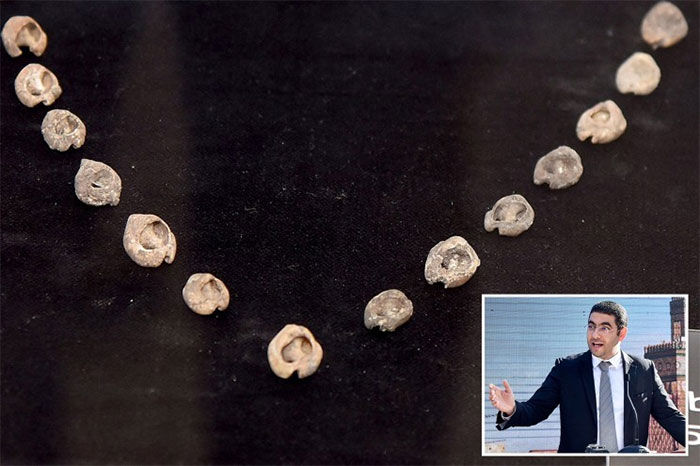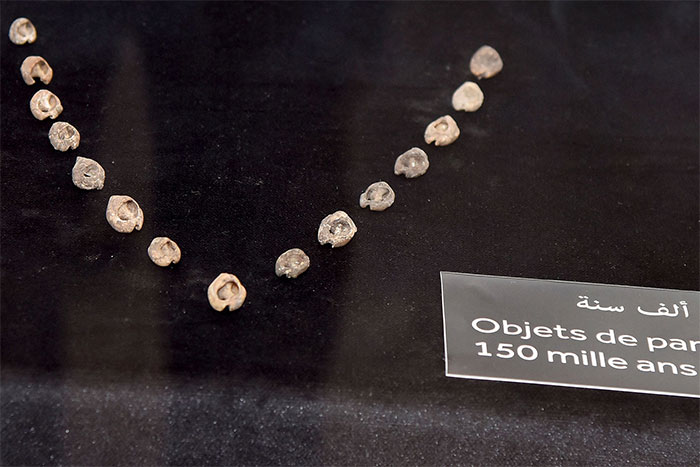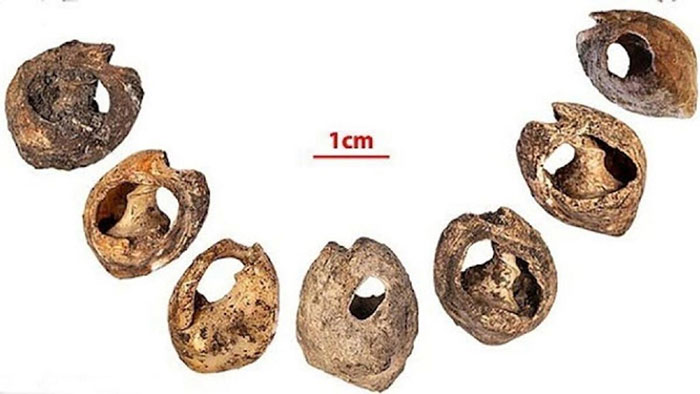A 150,000-Year-Old Shell Bead Necklace is Considered the Oldest Jewelry in the World.
Archaeologists have discovered the oldest known jewelry inside Bizmoune Cave, located about 10 km from the coastal city of Essaouira in southwestern Morocco.

These shell beads date back to between 142,000 and 150,000 years.
Using excavation machines, the research team uncovered 33 shell beads dating back to between 142,000 and 150,000 years.
They worked diligently to find more shell jewelry beads from 2014 to 2018. At the same time, the research team conducted extensive scientific analyses to ensure the accuracy of the dating.
El Mehdi Sehasseh, from the National Institute of Heritage and Archaeological Sciences in Rabat, who led the study, stated that his team used uranium dating methods to uncover the origins and timeline of the beads.
According to experts, this type of bead necklace is most closely associated with the Aterian culture, a Middle Stone Age period in North Africa. These ancient settlers were the first to use what we now refer to as jewelry.

This type of bead necklace is most closely associated with Aterian culture.

Each bead measures about 1 cm and has a round hole.
Steven L. Kuhn, a professor at the University of Arizona’s School of Social and Behavioral Sciences, who leads the team of paleontologists, noted that the jewelry was not only used for adornment but also held specific meanings.
According to Steven L. Kuhn, the shell beads are the earliest evidence of a form of non-verbal communication among humans.
Steven L. Kuhn stated: “Jewelry is part of how the wearer expresses identity, alongside the clothing they wear. This is evidence that jewelry has been present for hundreds of thousands of years, and humans have long been interested in communicating with larger groups, not just their close friends and family.”
The beads in the necklace are made from the shells of two different marine species, each about 1 cm long. They feature a small hole in the center for threading or attaching to clothing. They could be worn as earrings or necklaces. Many beads have smooth, polished edges, indicating the work of a skilled craftsman.
According to Steven L. Kuhn, the necklace helped nomadic indigenous people in the area express their ethnicity, utilizing limited resources during dry and cold climates.


















































